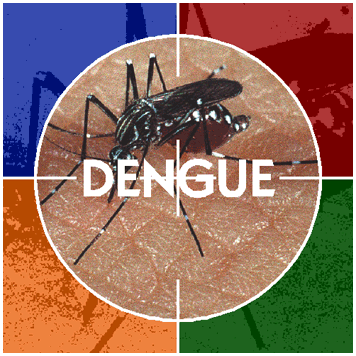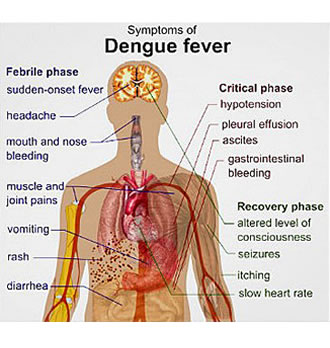
Dengue Fever is a serious disease that affects many nations worldwide and the culprit of Dengue Fever is mosquitoes!!!
What is Dengue Fever?
Dengue Fever is caused by the dengue virus by mosquitoes (mainly Aedes) to the spread of an acute infectious disease. Clinical characteristics of rapid onset, high fever, aching muscles, bone marrow and joint pain, extreme fatigue, some patients may have skin rashes, bleeding tendencies, and lymph nodes. Dengue Fever is found in tropical and sub-tropical regions around the world, it menace the health of more than 2.5 billion peoples. Currently estimates from WHO (World health organization), there may be 50 million dengue infections worldwide every year. It is a major tropical disease second to malaria.
Source of Dengue Fever
Dengue Fever is through the bite of infectious mosquitoes to humans. Mainly, the Dengue Fever is transmitted by Aedes Aegypti and Aedes Albopictus. Both mosquitoes are black and have white spot. There are five white rings on hind foot. The average lifespan of an Aedes mosquito in Nature is 2 weeks. The mosquito can lay eggs about 3 times in its lifetime, and about 100 eggs are produced each time. Commonly, as long as the Aedes mosquito contact with the infectious liquid, it has been infected. The Dengue Fever virus will breeding in the Aedes mosquito. After 8-12 days, the Aedes mosquito already has infectious. If the Aedes mosquito which is has infectious to bite human, the virus will be disseminated to humanity.
Symptom of Dengue Fever
Dengue Fever is a severe, flu-like disease that affects infants, young children, adults and all kinds of other social groups. Based on the age of patient, the clinical features of Dengue Fever are different too. For infants and young children, they may have fever and rash. For some older children and adults, they may have mild fever or even serious symptoms like abrupt onset, high fever, severe headache, pain behind the eyes, muscle and joint pain and rash.
Dengue Fever can be divided into two categories: Dengue Haemorrhagic Fever and Dengue Shock Syndrome. Usually, first time dengue infection will not result in serious consequences, but if the patient is infection again or is infected with different virus; it will commonly lead to Dengue Haemorrhagic Fever or Dengue Shock Syndrome.
Dengue Haemorrhagic Fever is a serious disease which might potentially resulted in other sickness if it is not treated properly. These sicknesses like high fever, severe headache, pain behind the eyes, often accompanied by enlargement of the liver and in severe cases circulatory failure might be serious enough to cause death.
The illness often begins with a sudden rise in temperature accompanied by facial flush and other flu-like symptoms. The fever usually continues for 2-7 days and can be as high as 41°C, possibly with convulsions and other complications. If the Dengue Haemorrhagic Fever is not treated properly, it may lead to Dengue Shock Syndrome.
For moderate Dengue Haemorrhagic Fever case, all signs and symptoms will be abated after the fever subsides. For severe cases, the patients’ condition may suddenly deteriorate after a few days, the temperature drops, followed by signs of circulatory failure and the patient may rapidly go into a critical state of shock and die within 12 to 24 hours, or quickly recover following appropriate medical treatment.


 Insecticide is poisonous.
Insecticide is poisonous.